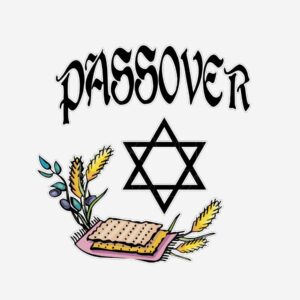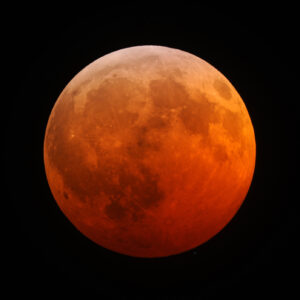“His Star” – What Signs Did the Magi See?
Magi saw “His star” signaling the birth of the “King of the Jews,” according to Matthew, and wanted to worship him. Astrology, astronomy or something else?[1]
MT 2:1-2 “…‘Where is He who has been born King of the Jews? For we have seen His star in the East and have come to worship Him.’” (NASB, NKJV)
MT 2:9-10 “…behold, the star which they had seen in the East went before them…When they saw the star, they rejoiced with exceedingly great joy. (NKJV)

Astrology is the belief that celestial bodies influence a person’s journey in life where horoscopes define a personality, successes, sorrows, challenges – a life’s destiny.[2]
Astronomy is a science where positions of stars and planets follow a predictive path that can be charted past, present and future – no mystical meaning in the science.[3]
Zoroastrian theology of the Magi did not believe astrology determined a person’s future, rather a person’s spirit was chosen through a chain of decisions by the age of 15. It was a freewill choice result.[4]
Going back millennia from the Assyrians and Babylonians down through the Greeks and Romans, planet-stars and certain fixed stars had names of gods varying by culture and language.[5] Stargazer Magi believed every planet had a meaning.[6]
As these symbolic celestial bodies moved through the night sky, the Magi viewed their interactions as having earthly significance.[7] A series of signs unfolded a story where one sign was associated with the next, ultimately portraying a particular outcome.[8]
Unknown to many, Hebrew scholars have long accepted a belief that during creation God instilled the 12 constellations with influences in world events.[9] Man abused this knowledge by worshiping the stars instead of God, thus He made it a forbidden practice.[10]
“The study of the universe as a whole was, like all other sciences in olden times, held in closest connection with religion, and was cultivated in the interest of the latter. The starworld was to the heathen an object of worship, but not to the Jews, whether national or Hellenized. With this reverence there was connected a superstition that the stars determined the destiny of man…It is obvious, therefore, that the Astronomy of the Talmudists [Jewish biblical sages] could not be an independent science any more than that of the Babylonians, the Egyptians, the Greeks, or of all other nations of antiquity or of the medieval ages: it was a department of knowledge belonging to theology.”[11] – Jewish Encyclopedia
Knowing how the Magi and the Hebrews viewed the constellations, the planets, their meaning and significance of their interactions serves as a key to solving the mystery of “His star.” By tying this information to the incredible factual astronomy events that played out on the night’s stage during the final years of the BC era, several theories emerge that could possibly identify “His star.”
One is the comet star theory when two comets were observed, first in 5 BC lasting for 70 days and then a second tailless comet visible during a single night on April 24, 4 BC.[12] They are distinctly two separate events which does not align to Matthew’s account.
Another theory cites ancient Chinese records telling how a nova burst in the constellation Aquila the Eagle in 5 BC where the explosion created a temporary brightening of the star before it faded back to a fainter state.[13] The nova theory has to overcome the very fact that it is a one-star, one-time event.
A popular theory is based on a series of conjunctions during the 7-6 BC timeframe involving the very close proximity of Jupiter-Saturn triple conjunctions when the trifecta took place in 7 BC inside the constellation Pisces the Fish on May 29, September 29 and December 5 that year followed by a massing of Mars, Jupiter and Saturn in 6 BC.[14] Jupiter and Saturn also twice came into close conjunction with the Moon.[15]
Rarity would be a factor since the Jupiter-Saturn triple conjunction was only the third since 562 BC, but this is problematic because it does not offer an explanation for a “his star.” The scenario did have Babylonian astrological implications by taking place inside the constellation Pisces known to the Babylonians as Nunu.[16]
Pisces the Fish constellation, considered to be the house of Jupiter, is associated with water and rain making the Earth fruitful.[17] In the Hebrew Zodiac, Pisces is the twelfth sign called Dagim that falls in the twelfth Jewish month of Adar, and is one of the three constellations of the East.[18]
Dagim represents fertility and pregnancy; a blessing. Adar is the month of joy holding the last holiday of the year, Purim, the celebration of hidden miracles and sets the stage for the month Nisan and the Passover.[19]
One starry scenario theory in 3-2 BC has stood out to modern-day experts. Seven extraordinarily close-proximity conjunctions tell an intriguing allegorical story that cannot be easily discarded.
Hitting squarely on several points, seven close conjunctions in 18 months provides an astronomy science an explanation for “His star.” The 2 BC timeline also matches the Caesar Augustus Pater Patriae registration decree and possibly precedes the death of King Herod deftly fitting with the Magi’s view of cosmic signs.
An 18-month series of rare conjunctions began in 3 BC with the .67˚ Saturn-Mercury conjunction. Saturn was known as Ninib, Babylonian god of fertility, and Mercury as Nebo, “the messenger of the gods,” the god of record-keeping and scribe who delivered messages to the mortals.[20] In this scenario, the messenger to the mortals and the scribe record-keeper god met with the fertility god.
Three weeks later came the .12˚ conjunction between Saturn and Venus who was the Babylonian’s divine personification of the goddess Ishtar, a composite goddess as the queen of heaven, the mother goddess, the goddess of love, marriage and childbirth.[21] Figuratively the god of fertility had met with the goddess queen.
Two months later, queen Venus made extremely close contact with its .07˚ conjunction with Jupiter, the king planet known to the Babylonians as Marduk, the patron god of creation.[22] The symbolic coming together of the king and queen is modestly obvious and possibly viewed by the Magi as the sign of a royal conception.
Perhaps the Wise Men could have chalked this all up to coincidence…until a month later. In just a half-tick of the comic clock, they saw where king Jupiter had left his visitation with queen Venus to begin a triple conjunction with the star Regulus.
Considered by the Persian to be the king of stars ruling the affairs of the heavens, Regulus was the leader of the Four Royal stars, the four Guardians of Heaven.[23] As the brightest and chief star in the center of the constellation Leo the Lion, Regulus is known as the Heart of the Lion.[24]
“Sharru” is the star’s Babylonian name was meaning the ‘breast, heart’ of the lion. In Hebrew, Sharru-ukin means “king; legitimate, true.”[25]
Leo is considered to be a royal constellation because of its status at the head of the Zodiac calendar dominated by king star Regulus and its direct path to the sun.[26] Well-known to the stargazers of the ancient world, Leo was called “Ser” or “Shī” by the Persians and “Arū” by the Babylonians, all meaning Lion.[27]
Over the next eight months, Jupiter’s triple conjunction path revolved around Regulus where, in essence, the king planet circled a ring around the king star of the heavens. Taking place in the heart of Leo the Lion, the sign of Judah, this triple conjunction may have signaled the Magi where to find the newborn king of Judea.[28]
June 17, 2 BC, Jupiter moved from circling Regulus directly back to a reunion with Venus for an overlapping occultation conjunction forming a single brilliant star. It was not a surprise to the Magi who would have anticipated its appearance.
Plausibly this Jupiter-Venus Conjunction occurred while the Magi were in Jerusalem. Matthew reports the Magi reacted with “exceedingly great joy” when they saw “His star” again, whether a conjunction or a true star.
Events in the night sky were extraordinary during the last 7 years of the BC era. If it was one of these scenarios or something else, the Magi obviously saw and believed in what they saw and acted on it.
Was the sign of “His star” announced by the Magi to King Herod in his Judean palace actually the conjunctions of Jupiter and Venus in 3 and 2 BC?
Update November 25, 2024.

This work is licensed under a Creative Commons Attribution-NonCommercial-NoDerivatives 4.0 International License.
REFERENCES:
[1]“Babylonian Astrology.” Babylonian and Mesopotamian Astrology and Astronomy. 2018. <https://factsanddetails.com/world/cat56/sub402/entry-6063.html> Clevenger, John. “Astronomy, Astrology, and the Star of Bethlehem.” Lake County (Illinois) Astronomical Society. 2012. <http://www.lcas-astronomy.org/articles/display.php?filename=the_christmas_star&category=miscellaneous> Dark Sky. HuffPost. image. 2014. https://s-i.huffpost.com/gen/1751394/images/o-DARK-SKY-WEEK-facebook.jpg>
[2] “astrology.” Merriam-Webster. 2018. <https://www.merriam-webster.com/dictionary/astrology> “astrology.” Encyclopædia Britannica. 2018. <https://www.britannica.com/topic/astrology>
[3] “astronomy.” Merriam-Webster. 2018. <https://www.merriam-webster.com/dictionary/astronomy> “astronomy.” Encyclopædia Britannica. 2018. <https://www.britannica.com/science/astronomy> Redd, Nola Taylor. Space.com. 2017. <https://www.space.com/16014-astronomy.html>
[4] Eduljee, K. E. “Is Zoroastrianism a Religion, Philosophy, Way-of-Life…? The Spirit.” Zoroastrian Heritage. 2011. <http://zoroastrianheritage.blogspot.com/2011/05/is-zoroastrianism-religion-philosophy.html> Eduljee, K. E. “Introduction. Zoroastrianism & Astrology.” n.d. <http://zoroastrianastrology.blogspot.com/
[5] Eduljee, K. E. “Zoroastrian-Persian Influence on Greek Philosophy and Sciences.” Zoroastrian Heritage. 2011. <http://zoroastrianheritage.blogspot.com/2011/04/zoroastrian-influence-on-greek.html> Eduljee, K. E. “Astrology & Zoroastrianism,” Zoroastrian Heritage. 2011. <http://zoroastrianheritage.blogspot.com/2011/04/astrology-zoroastrianism.html> Hochhalter, Howard. The Hollow 4 Kids. “A Celestial Road to Truth.” 2022. <https://thehollow4kids.com/a-celestial-road-to-truth/?fbclid=IwAR26hEnI1VfkjcBSRDJp2iyPIaNwPwrDZ0oHYg-pt9V0lumQTxX9WfXk4D0>
[6] “Every Planet Has a Meaning.” Magi Society. Lesson 3. 2008. <http://www.magiastrology.com/lesson1.html>
[7] Eduljee, K. E. “Greek Perceptions of Zoroaster, Zoroastrianism & the Magi.” #2, #33. Zoroastrian Heritage. 2011. <http://zoroastrianheritage.blogspot.com/2011/04/greek-perceptions-of-zoroaster.html> “Magi Astronomy.” Magi Society. 2008. <http://www.magiastrology.com/lesson3.html> Humphreys, Colin J. “The Star of Bethlehem – a Comet in 5 BC – And the Date and Birth of Christ.” pp 390-391. SAO/NASA Astrophysics Data System (ADS). 1991. <http://adsbit.harvard.edu//full/1991QJRAS..32..389H/0000391.000.html>
[8] Dickinson, David. “Is This Month’s Jupiter-Venus Pair Really a Star of Bethlehem Stand In?” Universe Today. October 14, 2015. <https://www.universetoday.com/122738/is-this-months-jupiter-venus-pair-really-a-star-of-bethlehem-stand-in/> Roberts, Courtney. The Star of the Magi: The Mystery That Heralded the Coming of Christ. pp. 70-71. <https://books.google.com/books?id=480FI6lj3UkC&pg=PA145&lpg=PA145&dq=magi+signs+in+the+sky&source=bl&ots=wQlvIonSLe&sig=yX-toR4CMY1JnebNxQjvYVpHHnc&hl=en&sa=X&ved=2ahUKEwj9vsaQlonfAhUInKwKHYG5D144FBDoATABegQICBAB#v=onepage&q=magi&f=false> Hochhalter. “A Celestial Road to Truth.” Hochhalter, Howard. “The Star of Kings and the Magi.” March 21, 2023. video. <https://www.youtube.com/watch?v=KGTmwuqznec>
[9] “Astrology.” Jewish Virtual Library. 2008. <https://www.jewishvirtuallibrary.org/astrology> Jacobs, Lewis. “Jewish Astrology.” My Jewish Learning. 2018. <https://www.myjewishlearning.com/article/jewish-astrology/> “Jewish Calendar: Months of the Jewish Year.” Bukharian Jews USA. 2010. Matrix: “Hebrew Months and the Zodiac.” <http://www.bjewsusa.com/jewish_calendar_03.htm> Borschel-Dan, Amanda. “As planets align, some see return of Jesus’ Star of Bethlehem.” Times of Israel. 26 October 2015. < https://www.timesofisrael.com/as-planets-align-some-see-return-of-jesus-star-of-bethlehem/>
[10] Deuteronomy 4:19. “Astronomy.” Jewish Encyclopedia. 2011. <http://jewishencyclopedia.com/articles/2052-astronomy> “star-worship.” Jewish Encyclopedia. 2011. <http://jewishencyclopedia.com/articles/13990-star-worship> Krane, Lloyd. “Adar and the signs of the Zodiac.” Jewish Magazine. 2008. <http://www.jewishmag.com/121mag/adar-mazel-sign/adar-mazel-sign.htm>
[11] Bold text and brackets added by author. “astronomy.” Jewish Encyclopedia. 2011.
[12] Everitt, Henry. “The Star of Bethlehem – A Chronology of the Life of Jesus.” Duke University|Department of Physics. Quarterly Journal of the Royal Astronomical Society 32, p. 389 (1991). <http://www.phy.duke.edu/~everitt/StarofBethlehem.pdf> Strobel, Nick. “The Star of Bethlehem – An Astronomical Perspective.” Astronomy Notes. 2011. <http://www.astronomynotes.com/history/bethlehem-star.html> “Star of Bethlehem may have been planets Jupiter and Venus.”. IU News Room. Dec. 2003. <http://newsinfo.iu.edu/news/page/normal/1203.html&t=Star%20of%20Bethlehem%20may%20have%20been%20planets%20Jupiter%20and%20Venus> Mosley, John. “Common Errors in ‘Star of Bethlehem’ Planetarium Shows.” International Planetarium Society Inc. Reprinted from the Planetarian. 1981. <http://www.ips-planetarium.org/?page=a_mosley1981> Humphreys, Colin J. “The Star of Bethlehem – a Comet in 5 BC – And the Date and Birth of Christ.” pp 390-391.
[13] “Star of Bethlehem may have been planets Jupiter and Venus.” IU News Room.
[14] “Star of Bethlehem may have been planets Jupiter and Venus.” IU News Room. Mosley. “Common Errors in ‘Star of Bethlehem’ Planetarium Shows.” Clevenger, John. “Astronomy, Astrology, and the Star of Bethlehem.” Greetham, Phil. The Nativity Pages. 2005. Index. <https://web.archive.org/web/20121011231348/http://www.btinternet.com/~prgreetham/Wisemen/theory.html> “Astronomy, Astrology, and the Star of Bethlehem.” Flescher, Eric and Sessions, Larry. “Ten ‘Star’ of Bethlehem Myths: Part II.” Space.com. 2001. <http://web.archive.org/web/20041205014757/http://space.com:80/SpaceReportersNetworkAstronomyDiscoveries/flescher_Xmasstar2_122601.html> Hochhalter. “A Celestial Road to Truth.” Hochhalter, Howard. The Hollow 4 Kids. “Star of Bethlehem Timeline.” 2022. <https://time.graphics/line/04b2774f964bedcd8a185a5860b2767d>
[15] Molnar, Michael R. “Revealing the Star of Bethlehem.” 2015. <https://web.archive.org/web/20160624012358/http://www.eclipse.net/~molnar/> Clevenger. “Astronomy, Astrology, and the Star of Bethlehem.” Pratt, John P. “The Star of Bethlehem’s Forerunner.” JohnPratt.com. Reprinted from Meridian Magazine. 2000. <http://www.johnpratt.com/items/docs/lds/meridian/2000/xmas_star.html> Fazekas, Andrew. “Christmas Star Mystery Continues.” National Geographic Daily News. 2008. http://web.archive.org/web/20170808084630/http://news.nationalgeographic.com/news/2008/12/081224-star-bethlehem.html>
[16] Kidger, Mark R. The Star of Bethlehem: an Astronomer’s View. 1999. pp 254-256. <http://books.google.com/books?id=_ISv1gPQJV4C&lpg=PA25&ots=WsfPW9KFFR&dq=anatole%2C%20greek%2C%20magi&pg=PP1#v=onepage&q=anatole,20greek,%20magi&f=false> MacKenzie, Donald A. Myths of Babylonia and Assyria. 1915. Chapter XIII. <http://www.sacred-texts.com/ane/mba/mba19.htm> “Marduk.” New World Encyclopedia. 2014. <http://www.newworldencyclopedia.org/entry/Marduk> “Marduk.” The 1911 Classic Encyclopedia. <https://en.wikisource.org/wiki/1911_Encyclop%C3%A6dia_Britannica/Marduk> Leverington, David A. Babylon to Voyager and Beyond – A History of Planetary Astronomy. Chapter 1.2. 2003. <http://assets.cambridge.org/97805218/08408/sample/9780521808408ws.pdf> “Ancient Assyrian/Babylonian Cuneiform.” Virtualsecrets.com. n.d. <http://www.virtualsecrets.com/assyrian.html> Allen, Richard Hinckley. Star Names and Their Meanings. pp 337, 341. 1899. <http://books.google.com/books?id=5xQuAAAAIAAJ&dq=Hinckley%2C%20Star%20Names%20and%20Their%20Meanings&pg=PP2#v=onepage&q=Hinckley,%20Star%20Names%20and%20Their%20Meanings&f=false> Rosenberg. The “Star of the Messiah” Reconsidered. pp 105-106. Nolle, Richard. “The Jupiter-Saturn Conjunction.” Astropro.com. 1998. <http://www.astropro.com/features/tables/geo/ju-sa/ju000sa.html>
[17] Rosenberg. The “Star of the Messiah” Reconsidered. p 106.
[18] “The Month of Adar.” Bukharian Jews USA. 2010. <http://www.bjewsusa.com/jewish_calendar_03_12.htm> Ullman, Yirmiyahu. “The Zodiac.” Ohr Somayach Tanenbaum College. 26 Nov. 2005. <http://ohr.edu/yhiy/article.php/2394> “Adar.” International Center for Tzfat Kabbalah. Tzfat-Kabbalah.org. n.d. <http://www.tzfat-kabbalah.org/whatis.asp?p=510> “Pisces.” Dictionary.com. 2018. <https://www.dictionary.com/browse/pisces> Ford, Dominic. “The Constellation Pisces.” In-The-Sky.org. 2018. <https://in-the-sky.org/data/constellation.php?id=67> “astronomy.” Jewish Encyclopedia.
[19] “Jewish Calendar: Months of the Jewish Year.” Bukharian Jews USA. Dovid, Avrohom. “Almanac of Important Jewish and Biblical Dates.” ThirdTemple.com. “Adar.’” n.d. <http://www.thirdtemple.com/JewishTime/adar.html> Heller, Rebbetzin Tzipporah. “The Choice of Adar.” n.d. <http://www.aish.com/h/pur/b/The_Choice_of_Adar.html> “Adar.” International Center for Tzfat Kabbalah. “Purim.” Jewish Encyclopedia. 2011. <http://jewishencyclopedia.com/articles/12448-purim>
[20] “Mesopotamia.” Messenger|MEcury Surface, Space ENvironment, GEochemistry, and Ranging. 2014. http://archive.is/kBVO> Cain, Fraser. “How Did Mercury Get Its Name ?” Universe Today. 2010. <http://www.universetoday.com/66432/how-did-mercury-get-its-name> Leverington. Babylon to Voyager and Beyond – A History of Planetary Astronomy. Chapter 1.2. “Ancient Assyrian/Babylonian Cuneiform.” Virtualsecrets.com. “Babylonian Astrology.” Babylonian and Mesopotamian Astrology and Astronomy. 2018. <https://factsanddetails.com/world/cat56/sub402/entry-6063.html>
[21] MacKenzie. Myths of Babylonia and Assyria. Allen. Star Names and Their Meanings. p 274. “Venus.” Myth Encyclopedia. Myths and Legends of the World. 2014. <http://www.mythencyclopedia.com/Tr-Wa/Venus.html> Leverington. “Babylon to Voyager and Beyond – A History of Planetary Astronomy. Chapter 1.2. McCormack. “Ancient Assyrian/Babylonian Cuneiform.”
[22] MacKenzie, Myths of Babylonia and Assyria. Chapter XIII. “Marduk.” New World Encyclopedia. “Marduk.” The 1911 Classic Encyclopedia. Leverington. Babylon to Voyager and Beyond – A History of Planetary Astronomy. Chapter 1.2. McCormack. “Ancient Assyrian/Babylonian Cuneiform.” “Jupiter.” WyzAnt.com. 2014. <http://www.wyzant.com/resources/lessons/english/etymology/planets/jupiter> Bunson, Matthew. Encyclopedia of the Roman Empire. “Jupiter.” 2002. <https://archive.org/details/isbn_9780816045624>
[23] Allen. Star Names and Their Meanings. pp 255-257. Olcott, William Tyler. Star Lore of All Ages. 1911. Reprinted 2017. pp 233-238. Google Books. <http://books.google.com/books?id=PN7JxXoB1c8C&lpg=PP1&ots=SRZwDRc6dW&dq=Star%20Lore%20of%20All%20Ages&pg=PA233#v=onepage&q=&f=false> Kaulins, Andis. “MUL.APIN – Sumerian Akkadian Astronomy.” LexiLine: History of Civilization. Section #13. 2013. <http://www.lexiline.com/lexiline/lexi182.htm>
[24] Allen. Star Names and Their Meanings. pp 256-257.
[25] Allen. Star Names and Their Meanings. pp 255. Olcott. Star Lore of All Ages. p 237.
“Regulus.” Constellation Guide. 2015. <https://www.constellation-guide.com/regulus/> “Sargon.” Behind the Name. 2018. <https://www.behindthename.com/name/sargon>
[26] Martin. The Star of Bethlehem. Chapter 1. Pratt, John P. “Coordinates for the Constellations.” JohnPratt.com. 2001. <http://www.johnpratt.com/items/docs/sidereal/sidereal.html> Martin. The Star of Bethlehem. Chapter 1. Olson, Ross.“Summary of Conjunctions of Planets (“wandering stars”).” 1997. Twin Cities Creation Science Association. n.d. < http://www.tccsa.tc/articles/star_dates.html> Olcott. Star Lore of All Ages. pp 236-237.
[27] Allen. Star Names and Their Meanings. p253.
[28] Genesis 49:8-10; Numbers 23:3-9, 21-24. Strobel. “The Star of Bethlehem – An Astronomical Perspective.” Carroll. “The Star of Bethlehem: An Astronomical and Historical Perspective.”
[29] Plato. Republic. Book 9, Section 572e. <http://www.perseus.tufts.edu/hopper/text?doc=Perseus:text:1999.01.0168:book=9:section=572e&highlight=magi>
 Final days of Jesus of Nazareth took place during the annual Passover observance in Jerusalem Circumstances surrounding the Passover are the trial, execution and Resurrection.
Final days of Jesus of Nazareth took place during the annual Passover observance in Jerusalem Circumstances surrounding the Passover are the trial, execution and Resurrection.![]()


